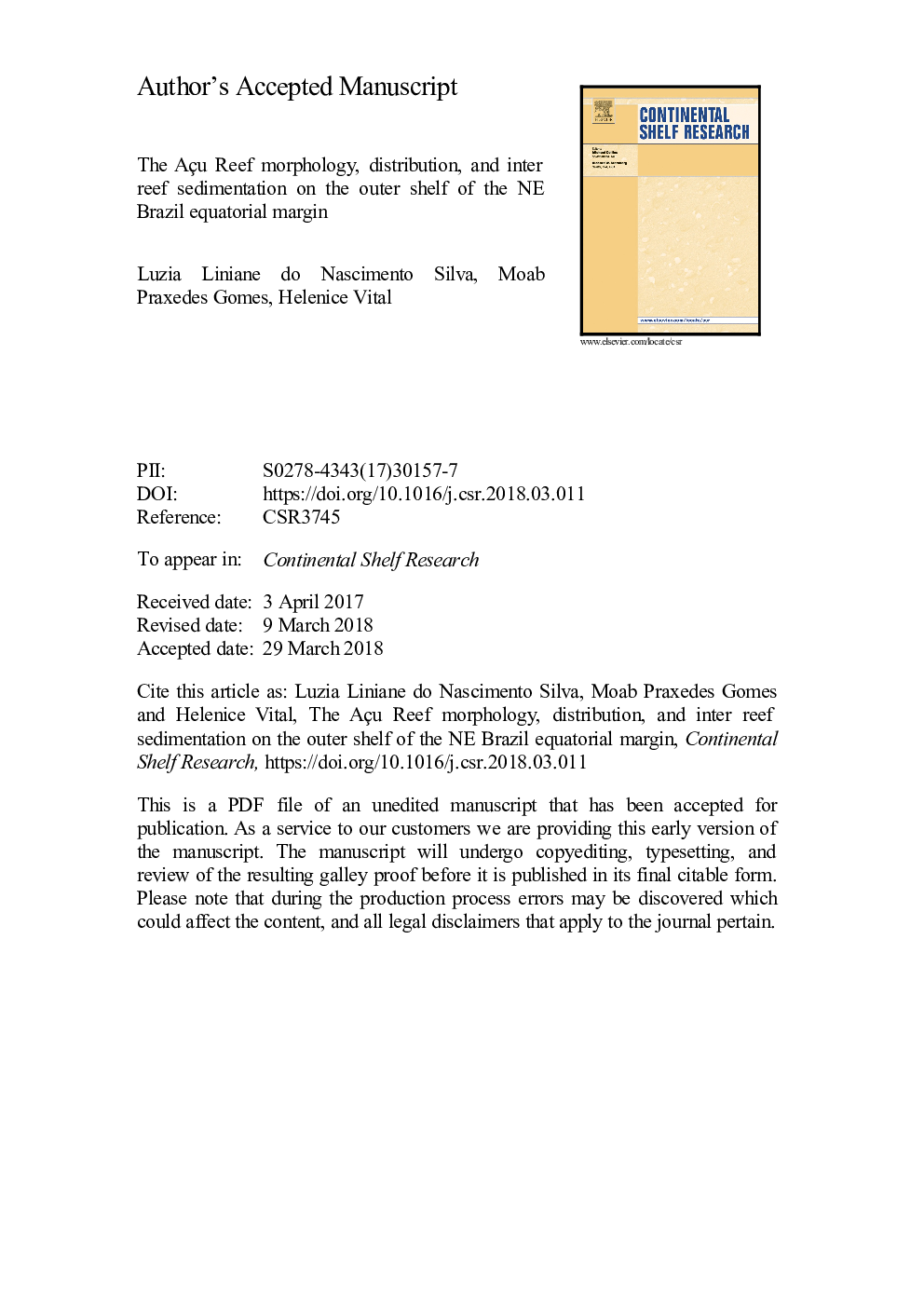| Article ID | Journal | Published Year | Pages | File Type |
|---|---|---|---|---|
| 8884047 | Continental Shelf Research | 2018 | 36 Pages |
Abstract
Submerged reefs, referred to as the Açu Reefs, have been newly observed on both sides of the Açu Incised Valley on the northeastern equatorial Brazilian outer shelf. This study aims to understand the roles of shelf physiography, its antecedent morphologies, and its inter reef sedimentation on the different development stages of the biogenic reef during last deglacial sea-level rise. The data sets consist of side-scan sonar imagery, one sparker seismic profile, 76 sediment samples, and underwater photography. Seven backscatter patterns (P1 to P7) were identified and associated with eleven sedimentary carbonate and siliciclastic facies. The inherited relief, the mouth of the paleo incised valley, and the interreef sediment distribution play major controls on the deglacial reef evolution. The reefs occur in a depth-limited 25-55â¯m water depth range and in a 6â¯km wide narrow zone of the outer shelf. The reefs crop out in a surface area over 100â¯km2 and occur as a series of NW-SE preferentially orientated ridges composed of three parallel ridge sets at 45, 35, and 25â¯m of water depth. The reefs form a series of individual, roughly linear ridges, tens of km in length, acting as barriers in addition to scattered reef mounds or knolls, averaging 4â¯m in height and grouped in small patches and aggregates. The reefs, currently limited at the transition between the photic and mesophotic zones, are thinly covered by red algae and scattered coral heads and sponges. Taking into account the established sea-level curves from the equatorial Brazilian northeastern shelf / Rochas Atoll and Barbados, the shelf physiography, and the shallow bedrock, the optimal conditions for reef development had to occur during a time interval (11-9 kyr BP) characterized by a slowdown of the outer shelf flooding, immediately following Meltwater Pulse-1B. This 2 kyr short interval provided unique conditions for remarkable reef backstepping into distinct parallel ridge sets. Furthermore, the Açu Reefs have trapped relict siliciclastic sediments within the three sets of reefs, west of the Açu Incised Valley and adjacent coasts. Lines evidence of easterly nearshore currents carried sediments from the old Açu Incised Valley and adjacent coasts. These incipiently drowned reefs influence the water circulation patterns of the modern shelf system, its carbonate sedimentation, and sediment transport. This study provides a new example of reef occurrence which might be more commonly observed on similar equatorial continental shelves.
Keywords
Related Topics
Physical Sciences and Engineering
Earth and Planetary Sciences
Geology
Authors
Luzia Liniane do Nascimento Silva, Moab Praxedes Gomes, Helenice Vital,
